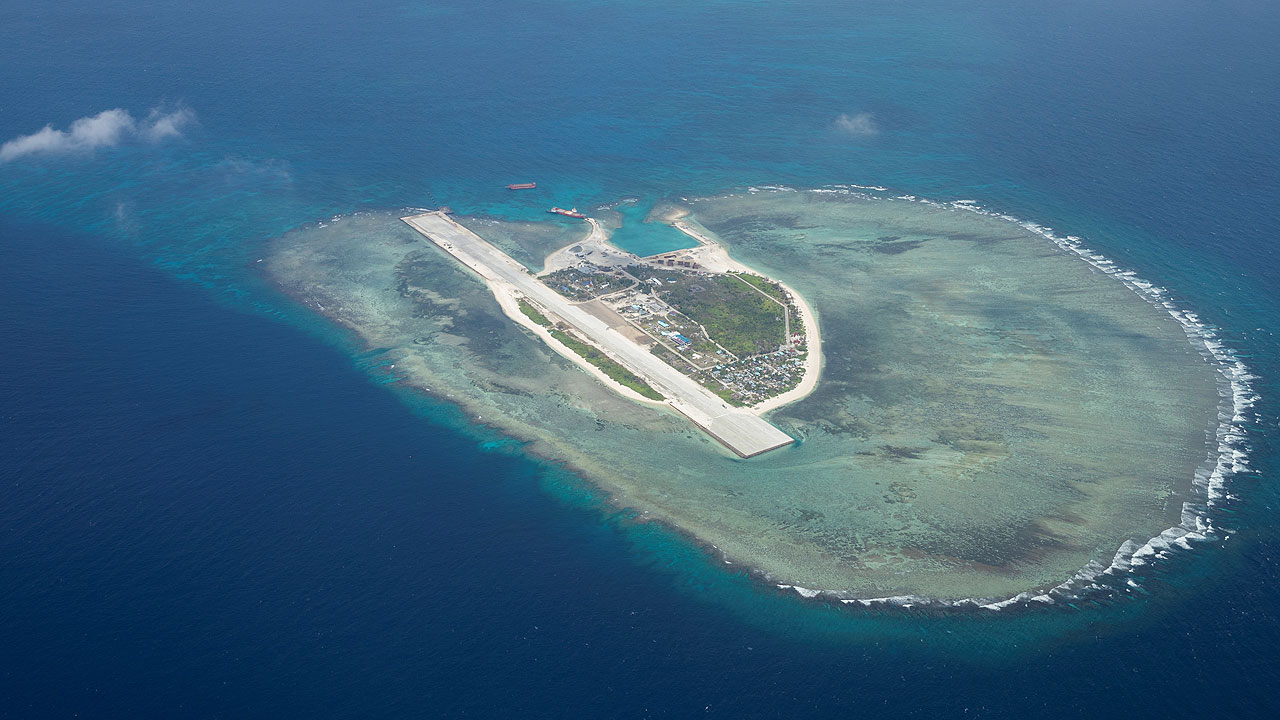Philippines uses buoys to assert sovereignty in South China Sea

By Kyle Aristophere T. Atienza, Reporter
THE PHILIPPINES has placed navigational buoys within its exclusive economic zone to assert sovereignty over the disputed Spratly islands in the South China Sea, a coast guard spokesperson said on Sunday.
The step comes amid China’s increased assertiveness in the South China Sea as Philippine President Ferdinand R. Marcos, Jr. pursues warmer ties with treaty ally the United States.
The Philippine Coast Guard said it had set up five buoys carrying the national flag on May 10 to 12 in five areas within the 200-mile (322-km) zone, including Whitsun Reef, where hundreds of Chinese maritime vessels moored in 2021.
“This move highlights the Philippines’ unwavering resolve to protect its maritime borders and resources and contribute to the safety of maritime trade,” Commodore Jay T. Tarriela, the coast guard spokesman on South China Sea issues, he said in a Twitter message at the weekend.
The Chinese Embassy in Manila did not immediately reply to a request for comment.
In May 2022, the Philippine Coast Guard installed five navigational buoys on four islands in the Spratlys.
A United Nations-backed international arbitration court based in the Hague voided China’s claim to almost the entire South China Sea in 2016.
Brunei, Malaysia, Taiwan and Vietnam also have claims in the Spratlys, where China has dredged sand to build islands on reefs and equipped them with missiles and runways.
Beijing has for years deployed hundreds of coast guard and fishing vessels in disputed areas.
Raymond M. Powell, a fellow at Stanford University’s Gordian Knot Center for National Security Innovation, urged Mr. Marcos Jr. to push for legislation that would formalize the Philippine Coast Guard’s transparency strategy that exposes China’s illicit activities in Philippine waters.
“It is very important to formal-ize this strategy, at least through official policy, but preferably through legislation,” he said in a Twitter message at the weekend. “This protects the policy against the political pressures that will inevitably be brought by those who find the sunlight uncomfortable.”
He said maritime transparency builds “national resilience” against the gray-zone tactics of China, which he said wants to keep its coercion and harassment at sea “to stay as gray as possible.”
“They prefer to bully their smaller neighbors in the shadows, with private warnings between government officials to remain quiet,” he said, noting that the transparency strategy makes the Philippines a “harder target for bullying.”
In February, the Philippine Coast Guard released a video showing the Chinese Coast Guard’s use of a military-grade laser to harass a Philippine ship supporting resupply mission at the Second Thomas Shoal, which is within the Philippines’ exclusive economic zone.
The coast guard has called China’s use of laser “a clear violation of Philippine sovereign rights.” China has rejected the claim, saying the use of laser was meant to “ensure navigation safety.”
The incident drew a sharp response from various countries including the United States, Australia, Japan, Canada, Germany, Denmark and United Kingdom.
“The transparency policy also builds support in the international community, mobilizing allies and partners to provide more security support,” Mr. Powell said.
“Finally, it increases the reputational costs for China, which over time should deter the use of these tactics by forcing them to recalculate the risk-reward calculus.”
‘INGENIOUS TOOL’
A Chinese Coast Guard and ships and Philippine patrol vessel carrying journalists almost collided on April 23.
It happened just a day after Chinese Foreign Minister Qin Gang met with Mr. Marcos in Manila where they agreed to establish more “lines of communication.”
During the incident the Chinese vessel kept a distance of 50 yards (46 meters) from the Philippine vessel BRP Malapascua.
The Philippine Coast Guard had spotted a swarm of more than 100 Chinese vessels during its April 18- 24 journey.
The Philippines, Vietnam, China, Brunei, Taiwan and Malaysia hold different — in some cases overlapping — territorial claims over the South China Sea.
Other countries that are also against China’s expansive activities in the South China Sea should also expose Beijing’s behavior at sea, security analyst Karl Gerard See said in a Facebook Messenger chat.
“The transparency policy is an ingenious tool that smaller actors in the region can use to expose China’s gray-area activities’,” he said. “The reason why these are called gray area is because they aren’t exactly legal.”
Mr. See and Jay L. Batongbacal, who heads the University of the Philippines Institute for Maritime Affairs and Law of the Sea, said it’s too early to say whether the transparency strategy has been effective in keeping China at bay.
“Only time will tell because China tends to ignore media exposure and similar allegations,” Mr. See said. “But if a concerted effort is done by smaller actors in Southeast Asia to expose these activities, we might see the other side take a more cautious response.”
“Other claimants will do so if they see the benefits that arise out of transparency,” Mr. Batongbacal said in a Viber message.
The Gordian Knot Center last week said several Chinese maritime militia vessels accompanying a Chinese research ship were headed to Vietnam’s waters. The ships appeared to have interrupted their deployment to the Spratlys and approached the path of seven Association of Southeast Asian Nations and Indian ships holding a maritime exercise that sailed through the South China Sea, it said.
“This (transparency strategy) is not something intended to produce an instantly permanent reaction,” Mr. Batongbacal said. “China may decide to adjust and adapt by taking a new track.”
He also said legislation might not be an appropriate means of establishing policy “over a problem as dynamic as the West Philippine Sea and South China Sea disputes.” — with Reuters



